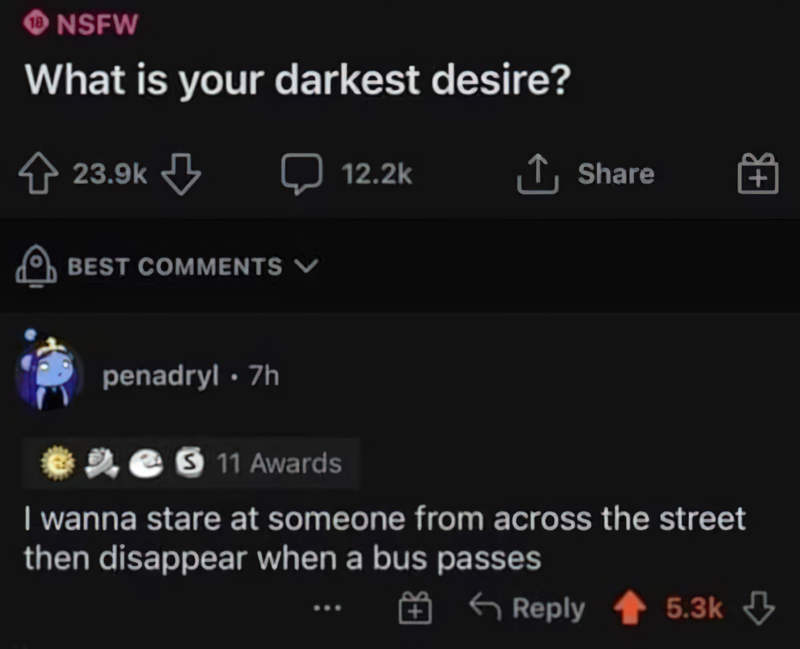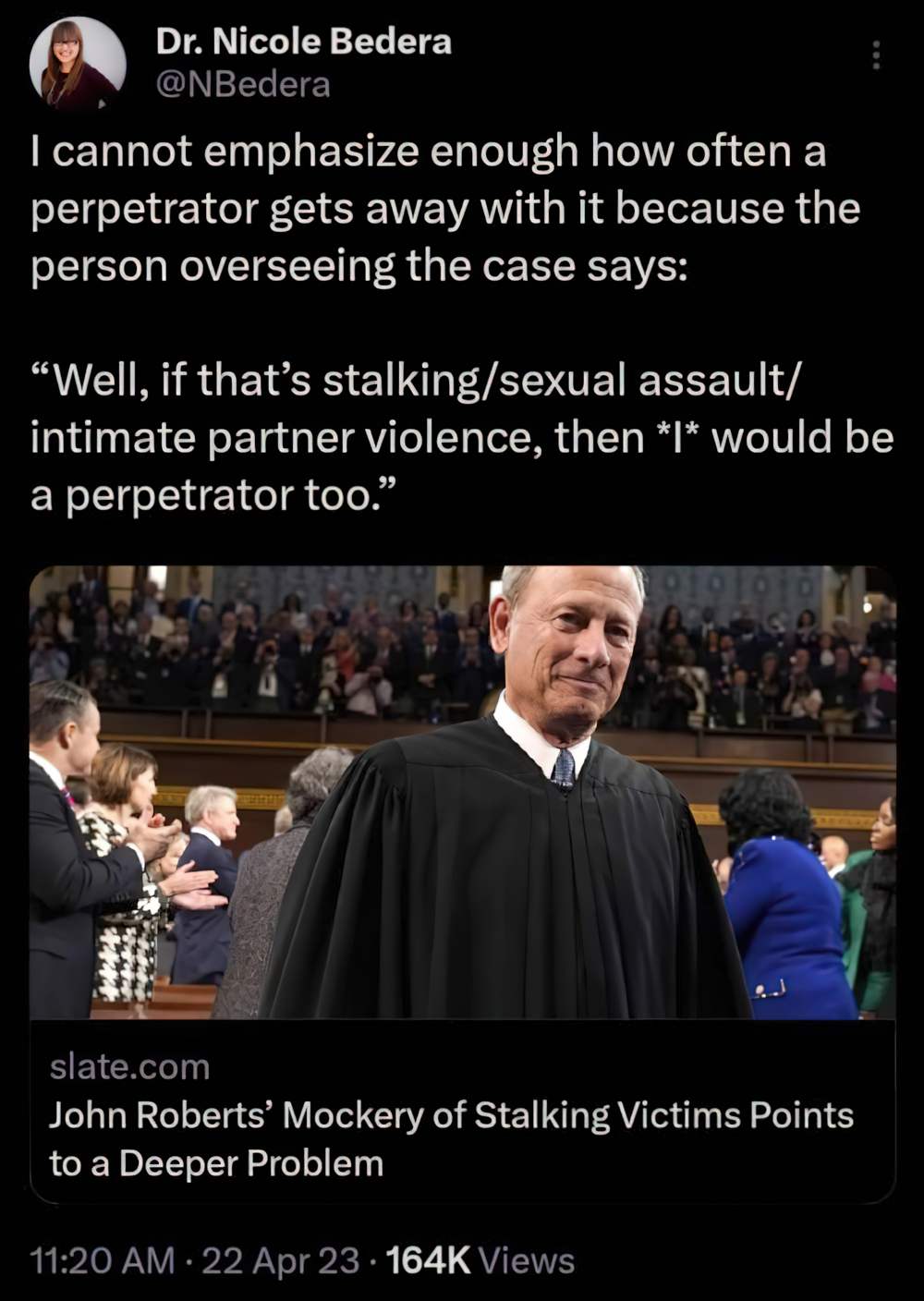“Paranoia” is a short story by American writer Shirley Jackson (1916-1965). Find it in Jackson’s Dark Tales collection (2016) or at The New Yorker, who published this story for the first time in 2013, almost half a century after the author’s death. Her children found it when going through her papers, held at The Library of Congress.
WHAT HAPPENS IN “PARANOIA”
A man travels from his workplace to home, convinced he’s being followed. Once home he is temporarily relieved, and sinks into the warm reception of his wife. But then she locks him in the living room and talks to someone on the phone and the paranoia resumes: The wife has plotted to have someone follow him. She’s in on it, whatever ‘it’ is.
Of course, there’s always the possibility that Halloran Beresford is not paranoid at all.
I wonder if Jackson tried (and failed) to get “Paranoia” published, or if she felt it was not quite ready. On first read, I lean towards ‘not quite ready’. It’s quite a slog, tailing this man home from work. All threat and no substance with a title that gives too much away.
PARANOIA AFFECTS 1 IN 6 PEOPLE
Paranoia affects 1 in 6 of us, but why is it so prevalent? One idea is that we evolved to be paranoid for the benefits it brings during social interactions.
See: The evolutionary origin of paranoia and why it is becoming more common from New Scientist.

THE EXPERIENCE OF BEING STALKED
Whether Halloran Beresford is really stalked within the world of the story is beside the point. Shirley Jackson describes a very real and surprisingly common experience.
A few weeks after reading this story — initially unimpressed — I happened to listen to a British podcast series by Shelagh Fogarty, a radio announcer who was stalked by a man for three years from 2017 (The Followers on Global Player).
“Over five million people get stalked in the UK each year.“
“No one really believes you, no one takes it seriously. You just feel you’re going mad.“
“I try to reason it’s possible to see the same person on the same train at the same time doing the same journey as you. But this is a completely different journey, the opposite direction. Yet here he is, the third day in a row.”
“It’s four days later, on a Tuesday, when I return [to London]. I’m preoccupied with keeping an eye out for the man who seemed to be following me the week before. I’d spent my time away convincing myself that I’d been paranoid. But deep down I don’t believe it could have been a coincidence.“
“This man has decided to spend his summer following me and I have no idea why. On the outside I stay calm, but my mind is racing. I just don’t know what might be coming next.”
“Despite all the people around me, everyone seems oblivious. I become acutely aware of how alone I am.”
“It dawns on me, I’ve seen him these times, but who knows how long he’s been following me. There’s a lot I don’t know and that makes me even more uneasy. And I become sure of something else: This cannot go unchecked any longer.”
“I don’t see him for a few days … and I begin to wonder if I’ve been taking things too seriously.“
“He appears harmless, and I’ve never seen him be violent. Maybe he’s just a social misfit who finally got the message and left me alone. Have I let my imagination get the better of me? Or, am I making excuses, so I don’t have to face what’s happening?
quotes from episode one
NORMALISATION IN PSYCHOLOGY
I also learned from the podcast that, on average, people who are stalked experience 100 instances of repeat behaviour before they call for outside help. That’s because of a psychological phenomenon called normalisation.
Normalisation describes how we reason away negative or unwanted behaviour.
Shelagh says, “It’s very difficult to have absolute conviction about anything.” We can tell ourselves we’re not being stalked; it’s just coincidence that we saw the same guy ten times on the same train, looking in our direction. Making it even harder, in the case of early stalking, each behaviour in isolation seems like nothing. It really is necessary to put all the isolated behaviours together to form a pattern. The pattern is terrifying, not necessarily the individual incidents.
Here’s what a psychologist has to say:
Because of human nature, we try to convince ourselves that [negative] behaviour is okay. Normalisation is when we normalise someone’s behaviour by trying to convince ourselves that what they’re doing is okay and normal rather than have to face the facts and challenge them.
Very often, when people are the target of anything — stalking, bullying or any form of harassment — it takes a while for them to get to the lightbulb moment where they almost sort of realise, though it may have been as plain as day to anybody else. Once you get to the point where you realise something is very definitely wrong despite every attempt you’ve made to prove to yourself the opposite, that’s when you give yourself permission to take action. That’s when it’s really important to talk to somebody else, because the affirmation from somebody else who will say, “That is definitely stalking; that’s not normal; that’s not okay,” that’s the springboard most people need to do something about it.
If you’re ever in doubt about whether something is wrong or not, the question to ask yourself is: “Is this making me feel uncomfortable?” And if the answer to that is “yes”, your subconscious is telling you, “something is not right”. The response must always be assertive.
“Assertive” means leaving the other parties in no doubt, you are not happy with this behaviour and putting something in place which achieves them stopping the behaviour.
You have a number of options available to you now. We call them the four Ds:
1. Direct action (Call the behaviour out)
2. Distraction (Change the subject, or to somehow move the situation somewhere else. It could even be saying, “I’ve got to rush now, I’ve got a meeting to go to…. Stop the situation in its tracks and hope that’s enough to send a message of discomfort.)
3. Delegation, which basically means tell somebody else. If that’s in the workplace, that could be the management or the HR team. If it’s outside the workplace it could be the police or the relevant authorities, or somebody else who could help you out.
4. Delay, which should never be underestimated. Go home, have a think, talk it through with friends and family, sleep on it for a couple of nights and come to a decision. A lot of people think that if they don’t deal with something at the time it’s too late, the moment’s passed, that words are no longer valid because they didn’t speak up at the time. That’s absolutely not true. Your words are valid when you want them to be valid, and not when somebody else says they are valid. It’s perfectly okay to speak up late.
behavioural expert who specialises in inappropriate behaviour
Although stalking is considered a low level crime by authorities, the impact on victims is not low level at all. Stalkers are driven by obsession and do not typically give up. Stalking sometimes leads to violence, rape and murder.
WHAT SHIRLEY JACKSON’S “PARANOIA” GETS RIGHT ABOUT STALKING
After listening to Shelagh Fogarty’s podcast, I was interested to return to Shirley Jackson’s short story. I was looking for parallels. Now I realise Jackson created a very realistic story about being stalked. I’d suggest she was stalked herself, or spoke in depth to someone who had been.
Like Shelagh, Jackson’s grey-suited man leaves work in a perfectly happy mood. This suggests his experience of seeing a stalker isn’t a result of psychosis or earlier trauma.
WHY ME?
Shelagh can’t understand why she — a woman in her fifties — would be the target of stalking when there are younger, more beautiful women on the same train. Her stalker is not interested in those women, only in her. She can’t understand why she would stand out. Likewise, Halloran Beresford looks like any other white collar worker commuting out of New York City to spend time with his family. We have in our mind that certain types of people get stalked: From noir movies, perhaps, we think of beautiful women, not the plain ones. We think of gangsters, not small, married salaried workers in nondescript grey suits.
A STALKER ON THE DAILY COMMUTE
Like Jackson’s fictional Halloran Beresford, Shelagh Fogarty first noticed her stalker on her commute home from work. Like Halloran Beresford, she felt unseen. On a savannah, being in a crowd would be protective. Only the hapless beasts on the outside of a flock get picked off by apex predators. But crowds can be equally dangerous when the predator is other people. Shirley Jackson sets up that feeling lonely invisibility in a crowd when Halloran tries to hail for a taxi without success. He doesn’t even realise he’s being stalked yet. Jackson also feminises him. He is small, and when he shouts his voice is ‘falsetto’. As far as men go, he is one of the more vulnerable guys.
SOMETHING ODD ABOUT HIM
Both the real life Shelagh Fogarty and the fictional Halloran Beresford pick their stalker out from a crowd of faces without knowing why, exactly, they settled on this particular person. All they can say is that he’s odd in some way. Shelagh Fogarty’s stalker had a strange gait. Halloran Beresford’s fictional stalkers is ‘a funny-looking guy’.
SELF-DOUBT
Both doubt themselves. The difference between real life and fiction: foreshadowing. Shelagh wasn’t doubting anything until she started to realise she had a stalker. But fiction works differently, and Shirley Jackson knows it. When Halloran Beresford is rudely brushed past, he keeps his mouth shut because he ‘doesn’t trust’ his voice (not to rise to a feminine falsetto). Remember, he does not yet know he’s being stalked. Jackson is setting up his character in advance. She has also set him up as a timid type, uncomfortable with the public display of hailing a taxi.

COINCIDENCE?
Once does not make a pattern. After seeing the man once, both Shelagh and Halloran forget about their stalker for a bit.
In the souvenir shop, Halloran is perturbed to see the light-hat man again. He can’t focus on his purchase. He considers confronting his possible stalker but doesn’t feel he has enough information to say for sure whether he’s being followed. Although unlikely to see the same man along his journey home, it’s not impossible. Coincidence is a thing.
NOTHING COULD POSSIBLY HAPPEN HERE, NOW
Crowds and daylight feel safe enough. What could possibly happen in daylight, surrounded by people?
BOLSTERED CONFIDENCE FROM FEAR
Fear makes us do things we wouldn’t normally think of doing. Shelagh Fogarty asks a stranger (an Australian man) to walk her through the station, and tells him she thinks she’s being followed. Halloran Beresford, struck by fear, is now far more confident in hailing himself a taxi.
HOW LONG HAS THIS BEEN GOING ON?
How long has this man been following me? I’ve only just noticed him now, but was he following me this morning, the day before, for the past year? Had I simply not noticed until now? What else does he know about me?
HEIGHTENED SENSES
Both go on high alert. They’re noticing everyone now, trying to determine who is safe, who to call on if someone should happen.
NO ONE WILL BELIEVE ME
They both consider the incidents too minor to report.
SHAKING HIM OFF
Both take a different route home, afraid that a stalker knows their routine and will find out where they live.
MINIMISATION
They minimise their own experiences after they are over. Sure, it’s harrowing at the time, but much easier to dismiss after the fact.

IS HALLORAN BERESFORD PARANOID OR STALKED?
The title is a spoiler if ever there was one (and possibly a stand-in title, since Shirley Jackson herself never had it published). Aside from that, Jackson offers several clues that this man in the light hat may not only be Not A Stalker; perhaps he doesn’t even exist.
First, Halloran’s bus zooms right past the bus-stop even though he, himself, sees a shadowy figure waiting there, waving his arms, no less.
At this point Shirley Jackson has successfully entangled me in the same paranoia as her main character. I find myself thinking, “Well, maybe this is an express bus that doesn’t stop at all the stops, and the guy waiting was a tourist and didn’t know that.”
The girl who is so sure she recognises him and drags Halloran back inside the carriage immediately ‘melts into the crowd’. Halloran feels he imagined her.
Finally, the wife locks him in a room which he didn’t realise was lockable, and makes a disturbing phone call. He (and we) can only hear one side.
The short story has no hermeneutical closure, but it does have emotional closure after emotions which follow a roller-coaster of an arc. Halloran’s emotions have gone from breezy and happy, worried, increasingly worried, temporarily at peace, then terrified.
PARANOIA AND NOIR
Paranoia is a dominant motif in film noir.
What is noir?
Some will tell you it’s not a genre but a cinematic style, readily recognisable due to its chiaroscuro light-and-shadow effects, uncomfortable tilted camera angles, femme fatal women and 1940s vibe. Noir is typically found across genres such as crime and detective, but also in science fiction and horror. Note: These are the highly symbolic genres. (Alongside Westerns, which can also be noir.)
Whereas those other genres tend to make use of noir in a clear and obviously symbolic way, the symbolism itself sometimes remains ambiguous. Are things happening externally, or internally as in a dream? In that case, you’re dealing with ‘paranoid fiction’.
The doppelganger is a common noir trope. Doppelgangers come in various forms. In Shirley Jackson’s “Paranoia”, the doppelganger is a shadowy man who takes the same route home, but not quite. A stalker who may not exist. (High contrast light-and-dark cinematography or description is great for noir, because shadows come to life, even your own shadow.)
Common themes: cynicism, fatalism, and moral ambiguity. The experience of being stalked is perfect for a noir take because the experience begins with ambiguity: Is this a stalker or coincidence? What does he want? How much does he know?
Noir plots tend to be fanciful. When a woman grabs Halloran and pulls on him, leaving other men to jeer and laugh, I consider that unrealistic. But ‘fanciful’ is a feature, not a bug. Even the character cannot believe what is happening. Writers create nightmarish scenes with no logic to draw the audience into the increasingly addled minds of their characters.
This short story really has felt like a bad dream, especially after I learned more about stalking.
CATEGORIES OF STALKERS
Why might someone be stalking this man?
In episode two of The Followers podcast, an expert explains how criminal psychologists categorise stalkers into five distinct types.
- THE REJECTED: Around 50% of stalking cases comprise ex-intimate partners. Primary motivation: To repair a relationship that has ended, and to punish someone for leaving. This group is at the highest risk of physical violence. Approximately 50% of rejected stalkers who threaten with violence will exact that violence.
- INTIMACY SEEKERS: Primary motivation: Loneliness. They seek a sense of connection. More stalkers in this group exhibit a mental health disorder e.g. psychotic or delusional. This group tends to persist the longest in their stalking behaviour. They often require mental health treatment
- INCOMPETENT SUITORS: Primary motivation: To find an intimate partner. These stalkers frequently have an autistic spectrum disorder or learning disability. They may not understand that their behaviours are scary and inappropriate, but don’t possess the social skills to pursue someone in acceptable, successful ways, respecting boundaries. These people tend to stalk people for a shorter period of time than the intimacy seekers.
- THE RESENTFUL: Primary motivation: retribution borne of humiliation. Something has happened or perceived to have happened. These people frequently use lengthy complaints procedures, targeting individuals or organisations, explaining to authorities that they are the one who has been wronged. They present themselves as the victim. However, even after the initial complaint is resolved, this is not enough. The resentful stalkers continue for lengthy periods.
- SEXUAL PREDATORS: Primary motivation: sexual harassment, abuse and rape. Fortunately this group comprises 1-2% of all stalkers. Stalking behaviour contributes to their own sexual gratification. These stalkers tend to keep their victims unaware that they are a target fixation. These stalkers may have multiple victims.
THE OPPOSITE OF PARANOIA
Pronoia is the belief that the universe is conspiring in your favour.
